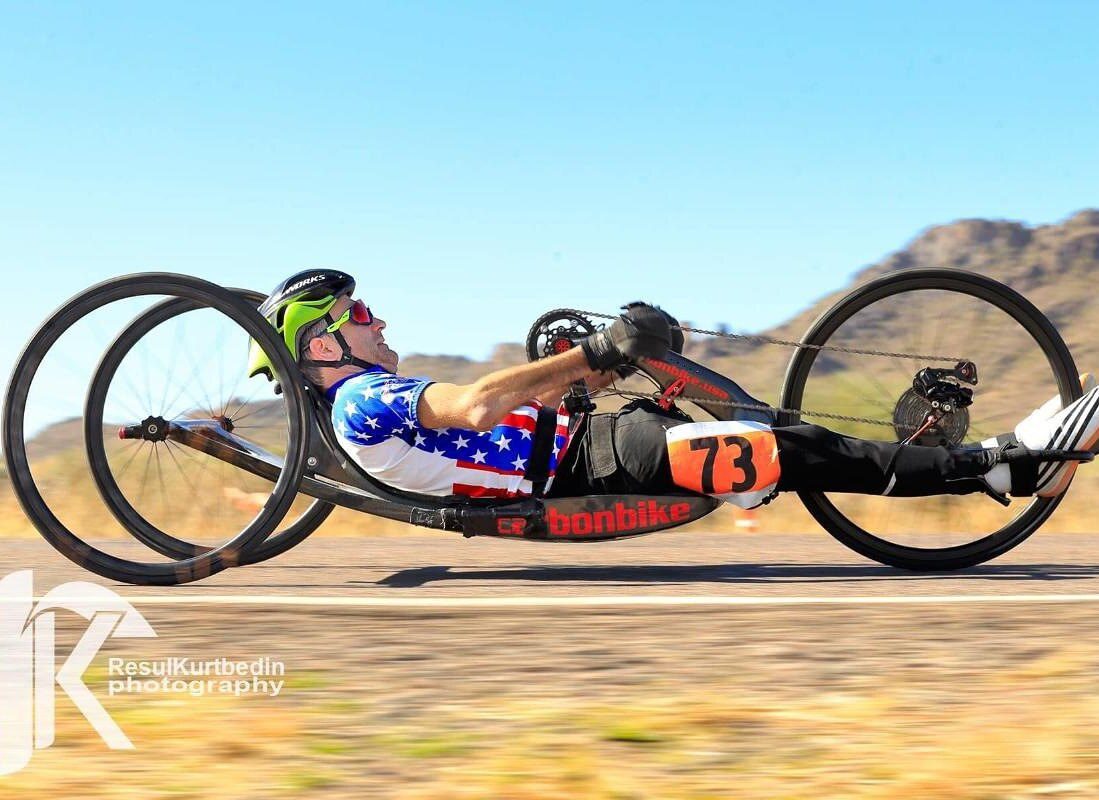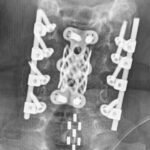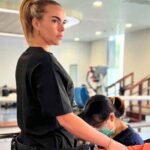Clinical exercise physiologist, college instructor, and athlete Barry Wilcox is certainly a man of many talents. Prior to suffering a spinal cord injury at age 16, Barry was already set for athletic prowess, having competed for the US National team and achieving the accolade of National Champion three times. Now, in 2022, he has been asked once again to represent the US, this time on the Paralympics Cycling National Team. He received epidural stimulation treatment in Bangkok with Verita Neuro in 2021 an incredible 27 years after his injury. He was kind enough to co-host a Q&A with our Medical Director Dr. Nasir, talking about his experience.
Barry, please can you introduce yourself?
Sure, no problem. I have a C6/C7 level injury, [it was] basically an explosion – huge fracture. I was injured on November 27, 1994, almost 27 years ago, so quite a while. I stayed active over the years, whether it’s hand cycling, wheelchair rugby, just going to the gym on a regular basis. I’ve been watching the research on epidural stimulation, actually, before it even got started in around ‘08-’09. Actually, I noticed that they started doing the procedure here in Thailand, in 2016, and I was staying up to date because didn’t want to be the first subject. I think I was the 100 and first.
What improvements since your treatment?
As far as improvements or post-injury, I’ve had more spasticity coming back. I haven’t ever had a lot of spasticity, I’ve never been on meds for spasticity, my main issues are obviously neurogenic, bladder, neurogenic bowel, and hypotension. I use an abdominal binder quite a bit, just to get blood pressure back up. But now with my stimulator on certain frequencies or certain settings, I should say, the blood pressure is fine. We found out a few days ago, which is good, it actually feels better than using a binder just because I think there’s more venous return, which is a good thing, more blood, and nutrients getting to the heart to the rest of the body.
So better blood pressure is a great thing. I’m sure many, many of you out there suffer from that. It’s the whole reason I came.
Functionally, I really had no expectations coming out here, whether we managed to increase voluntary control when the simulator turned on or whatever it may be. But when the simulators turned on, yeah, it feels great, it's awesome.
Barry Wilcox
I mean, some of you guys might ask about bladder and bowel improvements, and I haven’t really noticed anything there. There are certain programs that can help with the bowel program, I’ve just been just so early on I haven’t tried all options yet. So I’m going to start working on those soon. Just one thing at a time, because it’s like overload – it’s a lot to take in over a short amount of time. But when I go back home, we’re gonna continue working on it. I’m pretty grateful for the opportunity to be here and for the opportunity to do some rehab when I get back home as well.
And what about your motor function?
On certain settings, we can get a little bit of hip flexion and knee extension. Surprisingly the quads are still strong, actually, it’s kind of a joke – ‘Hey, they still work!’
Regarding the rest of the body, I’m managing to stand with the e-Pacer, we can get the hip flexors going a little bit and the quads are more active. So it’s kind of like a like a march, the more intensity we put in more of a march it is! The earlier on post-injury, the better. We’ve got a couple of guys here that are probably an average of a year post-injury and they’re doing really well. It’s awesome to see. So I’m kind of like a veteran in spinal cord injury, not in a military sense but like a veteran with SCI so many years, but it’s really cool seeing their progress.
I have a lot of hypermobility and little to no spasticity, just from years in a chair. So hopefully we can take care of some of that and manage my blood pressure. Walking wasn’t the expectation, but if I can get better over a year, two years, three years, hey, why not? Because I’m so late post-injury. So I guess that’s the bit of the story!
What made you finally decide to go for it with epidural stimulation?
I’m a clinical exercise physiologist and college instructor, professionally that’s what I do, so I guess I’m familiar with research. In 2005, I did my master’s thesis on myself with spinal strength and tricep strength so the research has always been something of interest because you never know what’s going to help someone. Whether it’s epidural stimulation, whether it’s stem cells, whether it’s just intense rehabilitation, it’s been a passion of mine to say on top of it. I’d rather not disregard my health and I look for options out there along the lines of health promotion just to maximize what I can do. I know, like Dustin Shuttlecocks, he was the third person I believe, to be implanted in Louisville and it was really fascinating to watch just his improvements. Nike talked to him fairly recently and he’s still happy with the results.
And why did you choose Verita Neuro?
Verita Neuro is not as limited here by the scope of the research. Like with other facilities [offering treatment in clinical trials] they are very limited by the scope of research. It’s an opinion, but they may be looking at just standing or just blood pressure so they kind of look at these systemic effects that come along over time only at the end of the study if they are just focusing on one thing. If they weren’t focusing on one thing, they might say ‘Well, what other improvements we’re seeing. Verita Neuro looks at all of those, which I find to be quite fascinating and impressive – they’ve also worked with over 100 people now so there’s just more experience, especially with mapping. They know and are finding that what works for one may not work for somebody else. So, that’s great.
Could you please share your thoughts about the surgery itself?
Yeah, I think it was four hours so I mean, not that long really. I mean, I’ve had an eight-hour surgery so I guess it’s not all bad! But the surgeon, he’s amazing, he’s a really nice guy, very personable and he’s implanted more stimulators than anyone in the world from what I know. Recovery was easy, the people are nice and kind. So it was a four-hour surgery, then two and a half days in the hospital. I think they usually begin mapping earlier when there’s no COVID. That’s been you know a bit of an issue with COVID, it means the whole situation is a little different here. But it was easy, I don’t have any pain, I don’t have any issues. If I had sensation maybe I’d have more pain, I don’t know but I had no pain below the injury and no side effects as far as I know. The staff are great and the people are cool. There’s a little bit of a language barrier, but nothing Google translate can’t resolve.
After surgery, what does it feel like generally when the stimulator is turned on?
People report different things – some people say they feel tingling up their body, and I just get muscles contractions, so things are tighter when the stimulator is turned on. But the biggest thing I notice is that my blood pressure goes up a little bit and it feels really good. So I think that’s what I notice the most and just more stability in my chair. One of my favorite programs is when the glutes and the hamstrings are stimulated and it gets my low back a little bit. Sitting posture is great, I feel good, it actually feels more normal, just the way I sat years and years ago, pre-accident.
In terms of the standing training, could you please elaborate a little bit more?
Almost 27 years post-injury I do have osteoporosis, and I have had it since 10 or 11 years post-injury, just borderline. So yeah, we just have to be cautious on bones. I’ve never had any fractures, knock on wood, with falls, or banging my legs just day to day. We are cautious here, we don’t go full weight-bearing. My standing frame at home is almost full weight-bearing so when I get back home, I’ll be using that with the standing program and just stimulating muscles, to build strength. Walking is going to be a little difficult when I get home, we’re trying to try to figure that out right now so we’re gonna find a local therapy clinic. There’s an E-Pacer, which is what we use here for walking, so I’ll probably purchase one of those, just to gradually increase the weight on bones over time, to be cautious.
But what’s interesting to see is when they hold the mirror and say ‘Contract your leg’, if I look at my quad I can see it contract when I tell it to which is pretty cool, to be honest. It’s so early but we’ll see what happens with gait training and new step training. With my hypermobility and atrophy, I think I need to be doing something as simple as new step training, to build hip strength, quads and glutes when I’m walking and standing. And consistency is going to be the biggest key to success I believe.
Could you please explain from a patient's point of view what mapping is?
Well, it’s just about finding you know, what works for each person. With me, we inverted the blood pressure program just to figure out what would happen, and it actually worked better than the core program, which is quite fascinating. And we find that using the lower leads is good for legs, for example. They just play with the different leads, and they’ve done this for what, four or five years now so, they understand what’s worked for one may work not for somebody else. So when they figure out, like with my quads, for example, they figured out which leads work best to extend my quads. It’s a bit of trial and error, but they’re very familiar with what’s been done in the past with previous patients.
Do you have any messages to give?
As I said, I came out here with no expectations, being almost 27 years post-injury, you’re kind of adapted to life in a chair. So anything, I guess, would have been a benefit, whether it was just more core stability and blood pressure, just for day-to-day mobility. Walking wasn’t really even a thought, to be honest, it was more ‘If that comes that’d be awesome’. So I guess it’s how you see it as well. You know, what improvements do you need? It’s personal for me. It was more quality of life. Everything.
If you want to investigate coming out here think about how long post-injury you are, what’s your level of function. They do cervical stimulators and lower, T11 to L1 simulators. So it depends on your injury location and what you want back! How much time do you want to spend doing rehabilitation? I even found some instances in my research where people didn’t do rehabilitation and they still gained function back. For me, I like what I’ve got so far. I’m looking forward to what’s to come. What else are you gonna do!? I guess it’s a good question to ask yourself. But, for me it’s been good – we’ll see what happens down the road. The research is, even though it’s still I guess, fairly new to some people, it’s pretty solid. The best thing to do is to talk to the professionals, like Dr. Nasir, for example.
This is not a verbatim transcript of Barry’s interview and the exact wording and order of words has been edited to be read more easily. To watch the full video of the interview, please visit our youtube channel.






